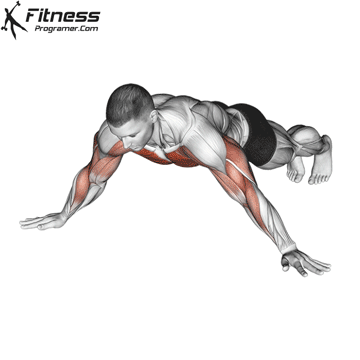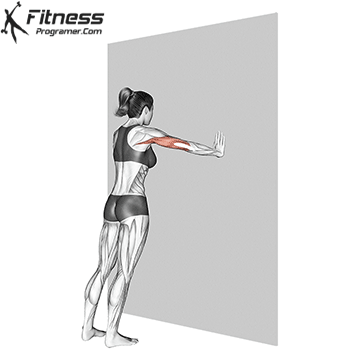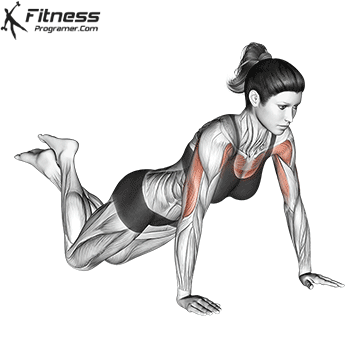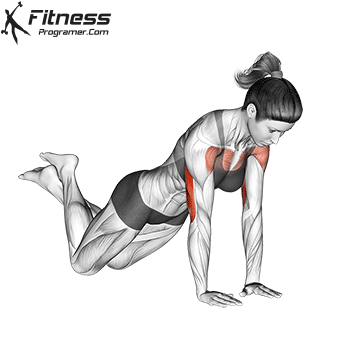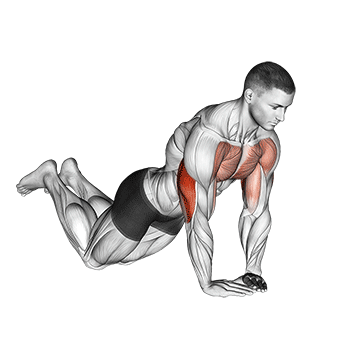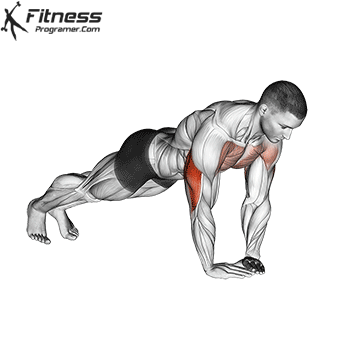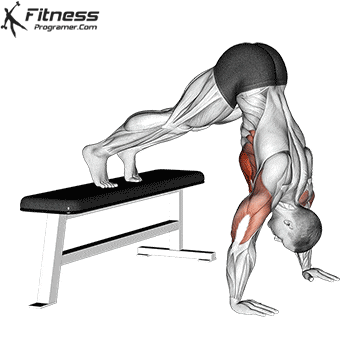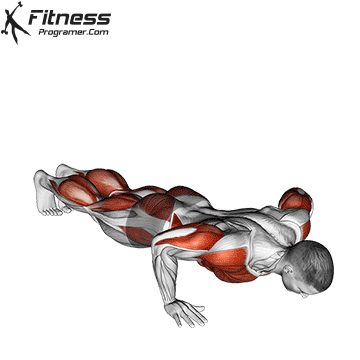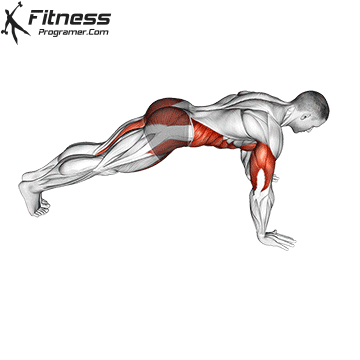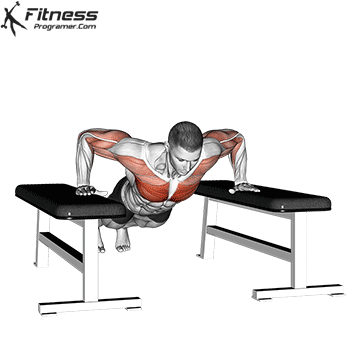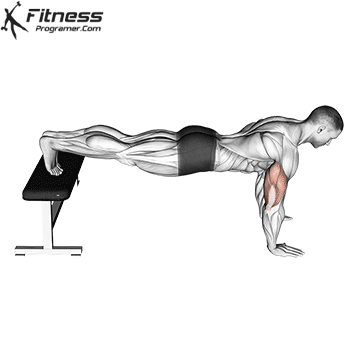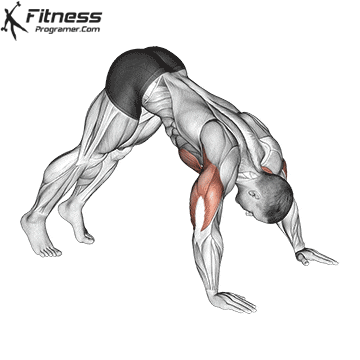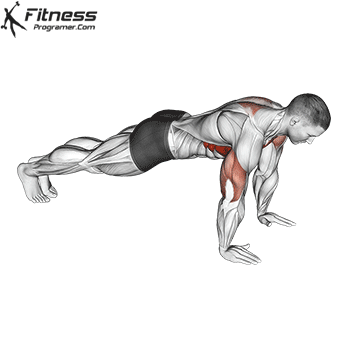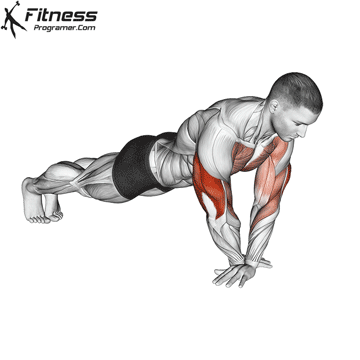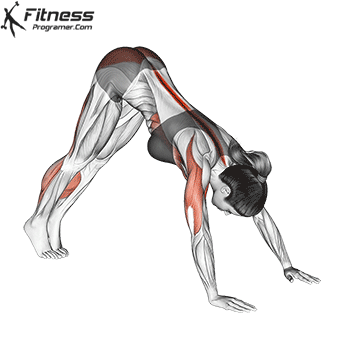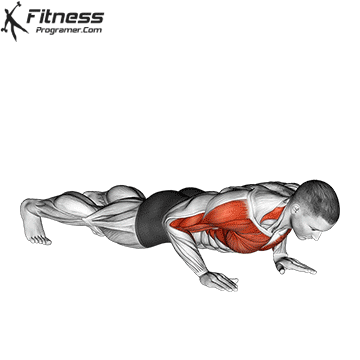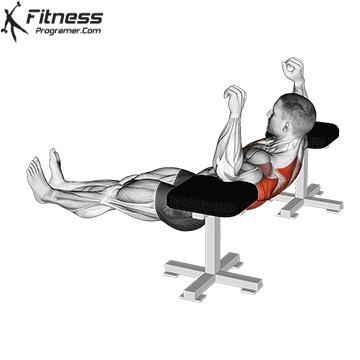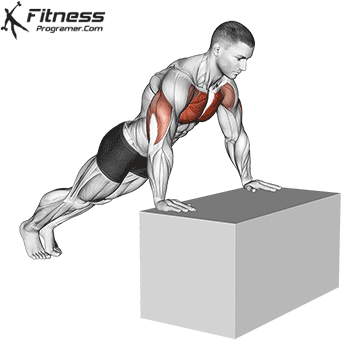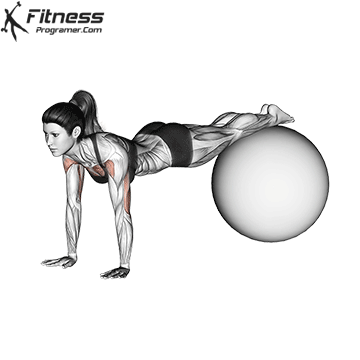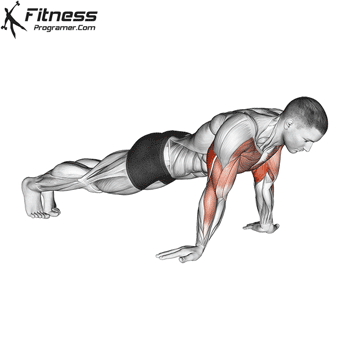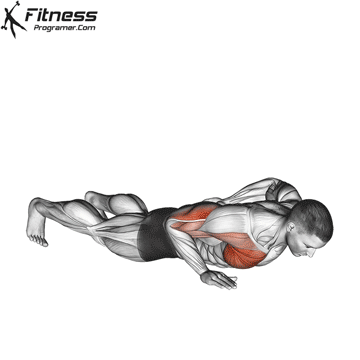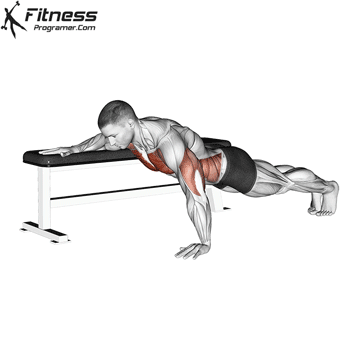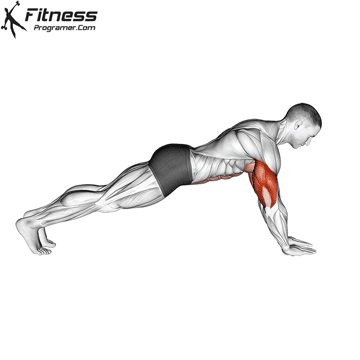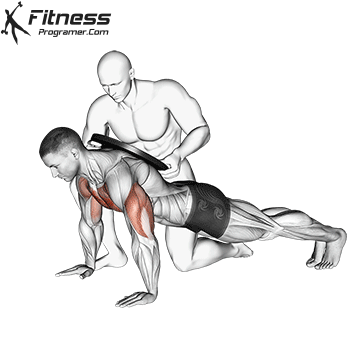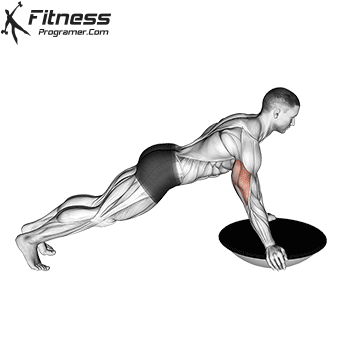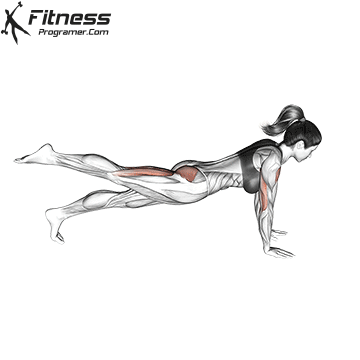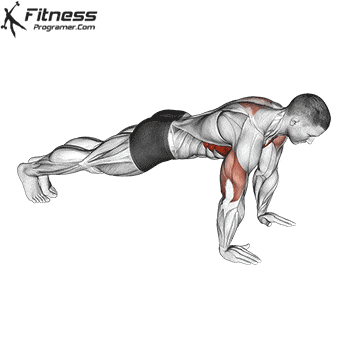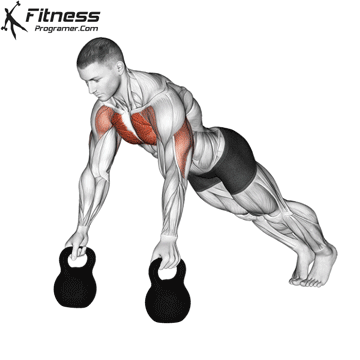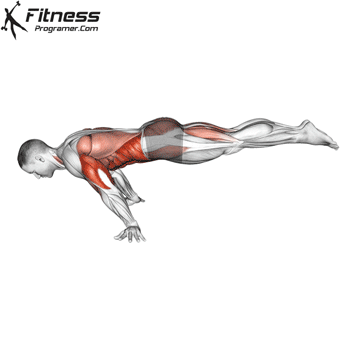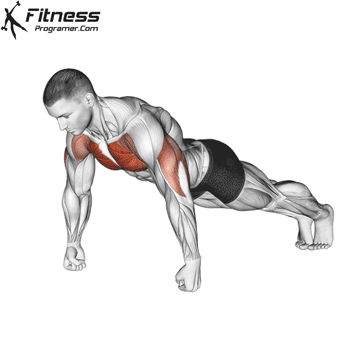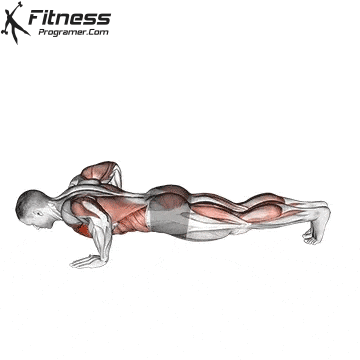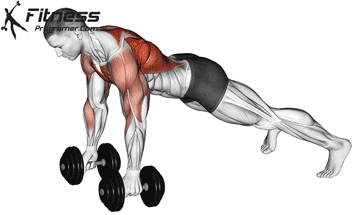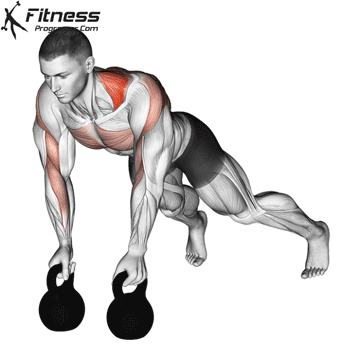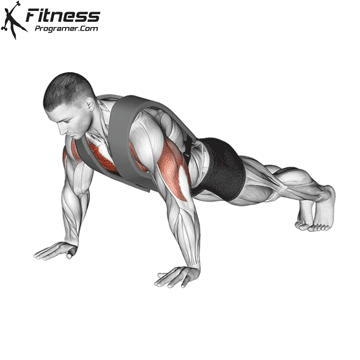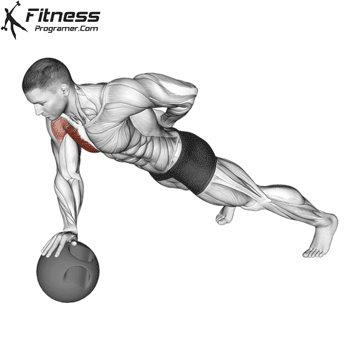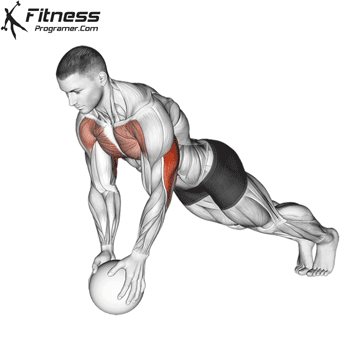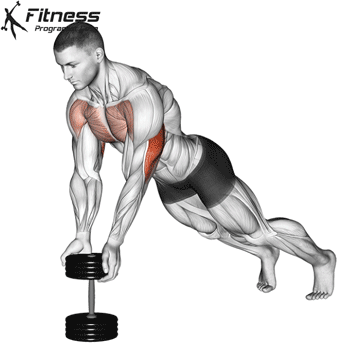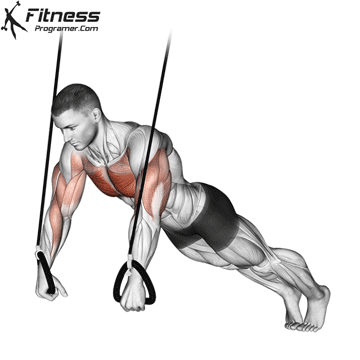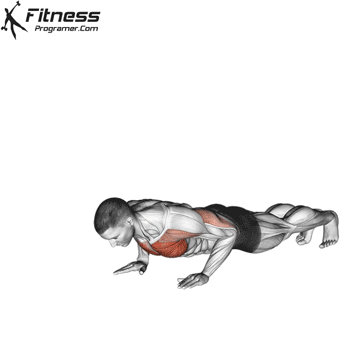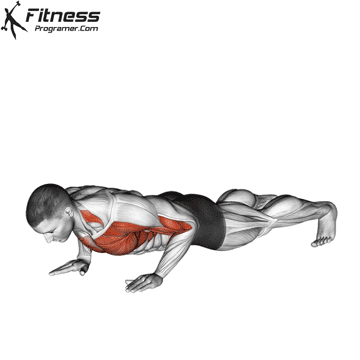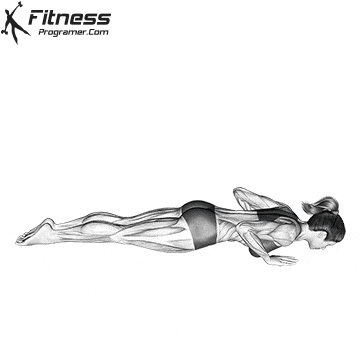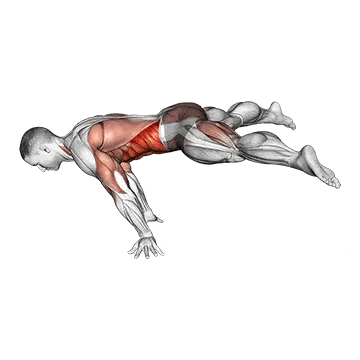Archer Push-Up Overview
The Archer Push-Up is a horizontal pushing exercise where one arm performs the majority of the work while the other extends outward for balance and support. It targets the same muscles as a standard push-up but increases the load on one side. This movement is frequently used in calisthenics and functional training as a stepping stone toward single-arm push-ups.
How to Perform Archer Push-Up
To perform the Archer Push-Up properly, follow these steps:
Start in a Wide Push-Up Position: Begin in a push-up stance with your hands placed wider than shoulder-width. Turn your fingers slightly outward.
Shift Your Weight to One Side: Lower your chest toward the working arm, bending that elbow while the opposite arm remains extended straight.
Keep the Other Arm Straight: As you descend, your extended arm should remain straight and act as a support beam, sliding outward across the ground.
Reach Full Range of Motion: Lower until your chest nearly touches the working-side hand while keeping your core tight and back flat.
Push Back to the Top: Drive through the working arm to return to the start position, then repeat on the same side or alternate sides.
Tips for Proper Form
Keep hips square: Maintain alignment to avoid rotating your torso.
Control the descent: Move slowly and deliberately to maximize time under tension.
Brace your core: Tighten your abs to maintain a straight line from head to heels.
Keep the extended arm active: Do not let it go limp. Maintain tension for balance and stability.
Breathe rhythmically: Inhale on the way down and exhale as you press up.
Common Mistakes
Rotating the torso: Twisting during the push reduces the unilateral effect and strains the spine.
Not going low enough: Shallow reps reduce strength gains and miss the full stretch.
Letting the hips sag: Sagging hips can compromise core engagement and lead to lower back stress.
Bending the support arm: Keep the non-working arm straight to ensure proper mechanics.
Uneven tempo: Rushing through reps on one side can create strength imbalances.
Benefits of the Archer Push-Up
Builds unilateral upper body strength: One side of the body does more work, making this ideal for correcting imbalances and building pushing power.
Improves core stability: The asymmetrical load requires stronger core engagement to prevent rotation.
Develops mobility and control: Going deep into one arm enhances shoulder and chest flexibility and range of motion.
Prepares you for one-arm push-ups: This is a key progression for advanced calisthenics training and unilateral strength goals.
No equipment required: Archer push-ups can be done anywhere and adjusted for difficulty by changing arm placement or using elevation.
How to Incorporate Into Your Routine
Include Archer Push-Ups in upper body or push-focused sessions. Beginners can start with elevated hands or reduced range. Perform 3 to 5 sets of 5 to 8 reps per side. Alternate arms or perform multiple reps on one side before switching. Use them after standard push-ups or as a prep for one-arm variations.
Archer Push-up Muscles Worked
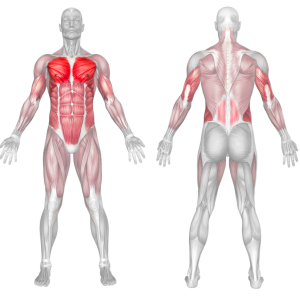
Other Push-up Variations
Push-ups can be modified and progressed to suit your fitness level. You can start with knee push-ups and work your way up to more challenging variations like diamond push-ups or one-arm push-ups.

